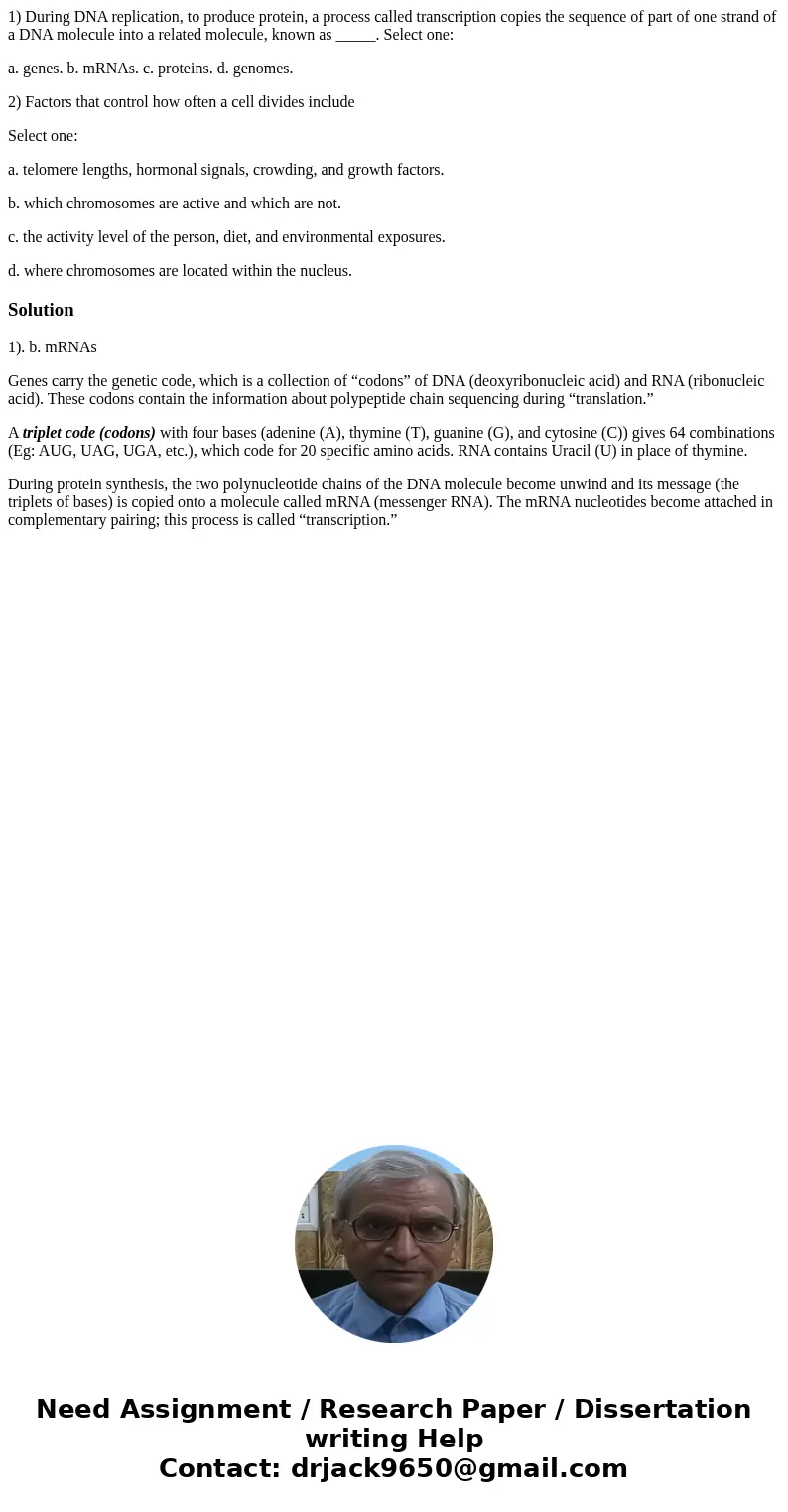1 During DNA replication to produce protein a process called
1) During DNA replication, to produce protein, a process called transcription copies the sequence of part of one strand of a DNA molecule into a related molecule, known as _____. Select one:
a. genes. b. mRNAs. c. proteins. d. genomes.
2) Factors that control how often a cell divides include
Select one:
a. telomere lengths, hormonal signals, crowding, and growth factors.
b. which chromosomes are active and which are not.
c. the activity level of the person, diet, and environmental exposures.
d. where chromosomes are located within the nucleus.
Solution
1). b. mRNAs
Genes carry the genetic code, which is a collection of “codons” of DNA (deoxyribonucleic acid) and RNA (ribonucleic acid). These codons contain the information about polypeptide chain sequencing during “translation.”
A triplet code (codons) with four bases (adenine (A), thymine (T), guanine (G), and cytosine (C)) gives 64 combinations (Eg: AUG, UAG, UGA, etc.), which code for 20 specific amino acids. RNA contains Uracil (U) in place of thymine.
During protein synthesis, the two polynucleotide chains of the DNA molecule become unwind and its message (the triplets of bases) is copied onto a molecule called mRNA (messenger RNA). The mRNA nucleotides become attached in complementary pairing; this process is called “transcription.”

 Homework Sourse
Homework Sourse